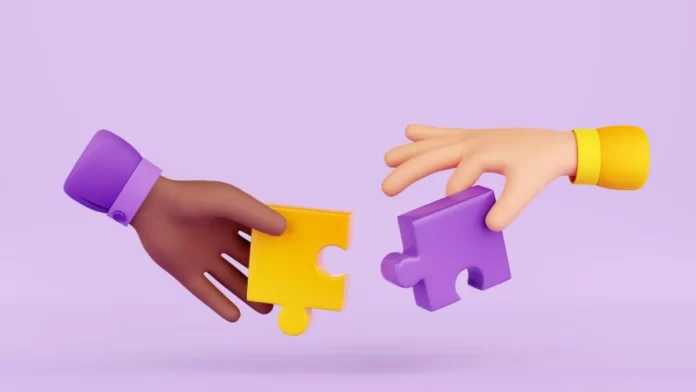In recent years, 3D computer vision has emerged as an exciting field driven by applications like augmented reality, autonomous vehicles, robotics and metaverse experiences. However, developing flexible 3D perception models that can scale and generalize well remains an open challenge.
Most prior work has focused on designing specialized model architectures that work with limited 3D data and tasks. But new models like Uni3D explore how to create unified foundation models for learning transferable 3D representations that can scale to over a billion parameters.
In this guide, we provide an in-depth look at Uni3D – how it builds on prior work, its unique training methodology, the capabilities it demonstrates and its potential to transform 3D understanding. We summarize key innovations like leveraging abundant 2D data and models to advance 3D representation learning.
Foundations of 3D Representation Learning
The ability to automatically analyze and understand 3D shapes, scenes and objects is critical for fields like robotics, autonomous vehicles, VR/AR and 3D content creation. This has driven research into 3D representation learning models that can process 3D geometry.
Early work focused on designing convolutional neural networks that operate directly on 3D point clouds. More recent methods like PointNet, DGCNN and PointConv introduced permutations, graphs and other innovations to improve localization and capture spatial context from point clouds.
Self-supervised techniques have also been explored for pretraining on unlabeled 3D data using pretext tasks like shape autoencoding, point cloud clustering, masking and reconstruction. These methods demonstrate the value of pretraining on large 3D datasets.
However, 3D representation learning remains limited in scale and transferability. Factors like small datasets, task specificity and computational constraints have restricted model size and applicability. There is a need for unified, scalable models like those emerging in NLP and 2D vision.
Related Article: Best AI 3D Model Generators: 10 Cutting-Edge AI Generators
Introducing the Uni3D Model
Uni3D is a new 3D representation model introduced by AI research company Anthropic to explore scalable, universal 3D learning. Key features include:
- Massive dataset of 10 million+ images, 70 million text descriptions and 1 million+ 3D shapes used for training
- Employs a Vision Transformer backbone for unified handling of 2D and 3D data
- Learns alignments between image, text and 3D point cloud features via contrastive learning
- Leverages benefits of scaling up models from 2D computer vision research
- Flexible framework allows scaling model capacity from 6 million parameters to over 1 billion
By consolidating diverse data modalities into a simple but scalable architecture, Uni3D aims to learn richer, more generalizable 3D representations.
Scaling Methodology for Uni3D
Uni3D is able to scale 3D representation learning to unprecedented model sizes by:
- Using a simple Vision Transformer architecture easily scaled up through techniques like wider layers and deeper stacks.
- Avoiding expensive 3D-specific pretraining like point cloud autoencoding. Instead initializes weights from pretrained 2D vision models like CLIP.
- Leveraging alignment with abundantly available image and text data as the training objective, rather than scarce labeled 3D data.
- This enables increasing model capacity nearly 10x more than the largest prior work in 3D representation learning.
- Unlocks the greater representational power derived from massive amounts of 2D supervised data.
This innovative framework allows translations of advances in large 2D vision models to make progress on the challenging task of 3D perception.
Also Read: How To Use ChatGPT On Azure OpenAI – A Step-by-Step Guide
Experimental Results and Analysis
Extensive experiments validate Uni3D’s capabilities:
- It significantly outperforms prior work on few-shot shape classification benchmarks like ModelNet and ScanObjectNN.
- The model displays strong generalization on datasets never seen during training like Objaverse.
- State-of-the-art performance on linear probing confirms Uni3D learns high quality representations.
- Uni3D recognizes 3D shapes accurately in real-world ScanNet scenes without any task-specific fine-tuning.
- Real-world image queries retrieve highly relevant 3D shapes, highlighting multimodal knowledge.
- Aligned image pairs retrieve combined shapes indicating compositional understanding.
Together, these quantitative results and qualitative examples demonstrate the representations learned by this large unified model.
Broader Impacts and Future Work
As one of the first billion-scale 3D vision models, Uni3D has significant broader implications:
- It helps close the gap between 2D and 3D vision representation learning.
- The unified modeling approach extends benefits of scale from 2D to 3D.
- Paves way for further multimodal convergence between vision and language.
- Potential to expand model capacity even further as computational resources grow.
- Additional modalities like video, audio and touch could enrich learned representations.
- Models like Uni3D lay the foundation for real-world metaverse experiences.
While further progress is needed, Uni3D demonstrates the viability of unified foundation models for 3D perception.
Conclusion
In summary, Uni3D introduces a new paradigm for scaling up 3D representation learning by leveraging the abundance of 2D supervised data. Through a simple but unified Transformer-based architecture, it is able to consolidate diverse modalities and train at unprecedented scale.
The substantial empirical gains over prior state-of-the-art approaches highlight the advantages of this scalable pretraining framework. Uni3D’s strong performance across various 3D tasks underscores its potential to greatly advance real-world 3D understanding.
By bridging 2D and 3D vision through a flexible foundation model methodology, Uni3D represents an important step towards unlocking the next generation of intelligent 3D applications. As models continue to grow in size and capabilities, this work helps illuminate a promising path forward for the field.
FAQs about Uni3D
Q1: What are the key challenges in scaling up 3D representation learning?
The main challenges are the scarcity of labeled 3D data, high computational costs of 3D operations, and difficulty transferring across different 3D tasks and datasets. Uni3D tackles these through its use of abundant 2D data and efficient model architecture.
Q2: How does Uni3D leverage existing 2D vision models?
Uni3D initializes its weights from pretrained 2D vision models like CLIP. It also aligns image-text data with 3D shapes as a pretraining task. This allows Uni3D to take advantage of the vast 2D supervision and model advancements.
Q3: What applications could benefit from Uni3D’s representations?
The universal 3D features learned by Uni3D could improve performance on downstream tasks like 3D object classification, segmentation, reconstruction, AR/VR experiences, robotics and more.
Q4: What gaps still exist in moving from 2D to 3D vision?
Key challenges include scaling up diverse 3D datasets, reducing the computational intensity of 3D operations, and building models that handle dynamic 3D environments. Continued research into unified foundation models will help close the gap.






